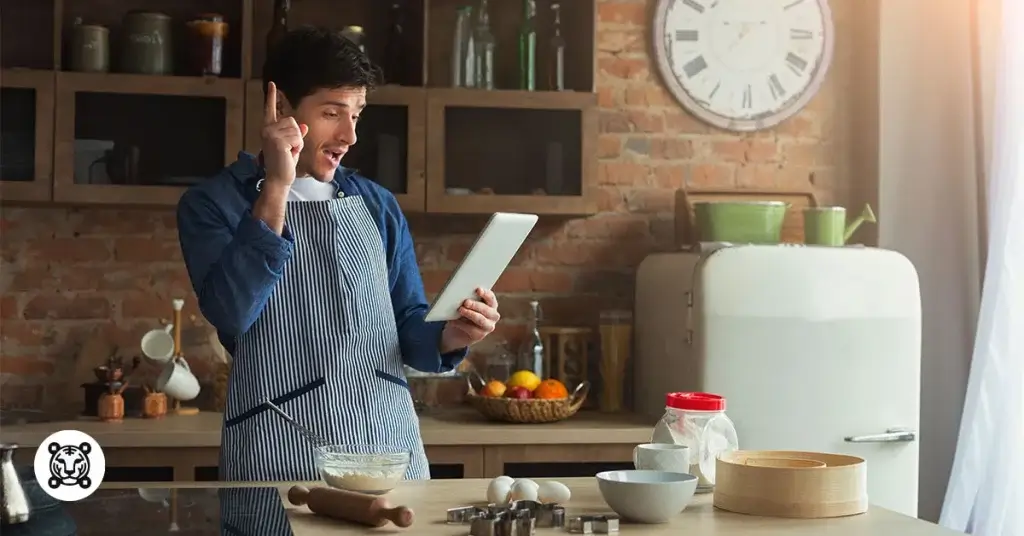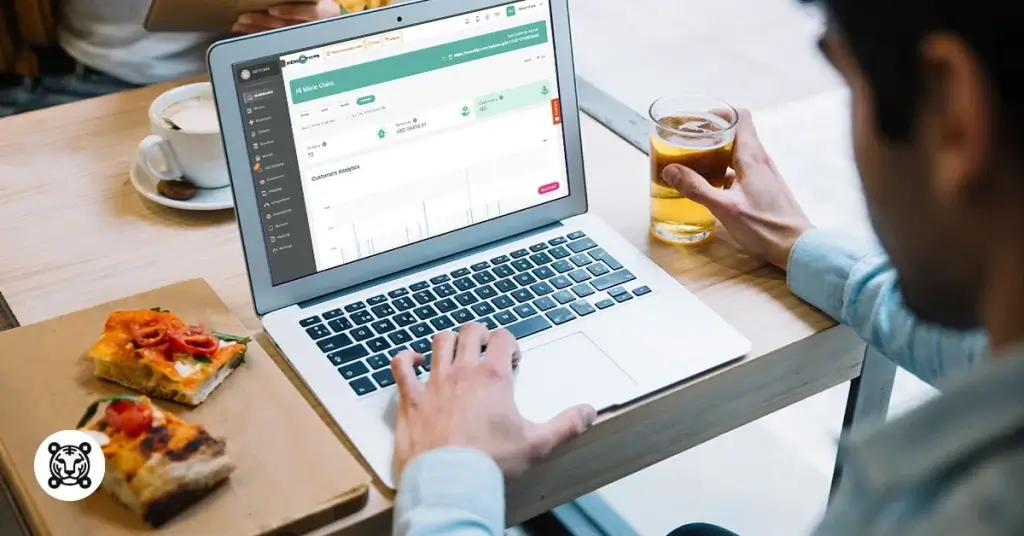
What Is A Bistro And How To Open One
Last Updated: April 15, 2025
You’ve probably been thinking of shifting from having only a food cart to a small yet functional dine-in place where you can house several customers.
If so, a bistro is a perfect establishment for you. But you may have questions in mind: “What is a bistro? How can I open one?”
A bistro is a small, casual restaurant known for its cozy and welcoming ambiance. To open one, you need to develop a concept that can serve as your identity, look for a good location that can drive traffic, and explore various technologies like QR code menu ordering tools and service management systems to help you organize your daily operations.
Also, you need a popular menu list to fully equip you once you’ve decided to launch your own small dining space.
So, how do you define bistros?
Bistros are unique types of restaurants that stand out from others due to their cultural context and usage in France, their place of origin. Understanding the barback meaning can also be important in this setting, as it highlights the roles that support the bar staff in such establishments, ensuring a smooth and efficient service for customers.
One popular theory suggests that the word comes from the Russian word “быстро” (pronounced as bystro), meaning “quickly.”
Over time, it came to refer to a type of small restaurant in France that serves simple, home-style meals in a relaxed and casual setting.
This is why it typically features a simple yet hearty menu with a focus on traditional home-style French dishes.
The food is usually made with fresh, local ingredients, and the restaurant menu pricing is generally affordable, making it popular for both quick meals and leisurely dining in a warm, welcoming environment.
The difference between a bistro and other food service
Bistro vs restaurant
The difference between a bistro and a restaurant may not always be evident and may change depending on the area or cultural setting.
In France (where the term bistro is used), it’s usually intimate and comfortable, with straightforward decor and an emphasis on comfort.
Meanwhile, a restaurant refers broadly to any place where meals are served to customers. It can include everything from quick food restaurants to fine dining places, which are often larger and have different ambiance based on the concept and target market.
Bistro vs cafe
A bistro and cafe both offer casual dining experiences but differ in focus and ambiance.
A bistro, typically serves generous, traditional meals like steak frites in a slightly more formal, intimate setting, often accompanied by a selection of wines.
In contrast, the cafe is more relaxed, focused on beverages like coffee and tea and light fare such as sandwiches and pastries.
Bistro vs bar
Bistros focus on dining and bars mainly on socializing over drinks.
A bistro has this cozy, intimate setting with a menu centered on well-prepared meals, often served with wine.
The bar primarily revolved around a wide selection of alcoholic beverages, with a lively atmosphere that encouraged social interaction.
9 expert strategies to open a bistro successfully
Concept development
With more than 700,000 recorded brick-and-mortar restaurants in the US, your first step is to determine how you’ll set your bistro apart.
To do that, you must identify your niche: Will you specialize in French cuisine, farm-to-table dishes, or unique Asian restaurant food fusion?
Once you decide which direction you’re taking, you can clearly define your target audience and unique selling points.
Location selection

Learning how to choose a restaurant location is equally important as setting a specific area for your food truck.
This is to ensure the feasibility and visibility of your business.
The initial step is to assess the competition around your local. Evaluate nearby restaurants and bistros to identify potential opportunities and challenges.
Based on the insights gathered, look for a spot with good foot traffic with the target demographics that match your concept.
Consider proximity to complementary businesses so that it will be easier for you to build partnerships with them.
Venue design
The first impression matters.
To make this count, create a space that entices people as they walk in. This sets the tone for what your bistro could offer them.
Here are tips on how:
- Flow and functionality
Regardless of the restaurant themes you choose, focus on creating a design that allows both customers and staff to move around easily.
Proper seating arrangements, clear pathways, and strategically placed service areas are what make the dining experience smooth and enjoyable.
- Comfort and ambiance
Ensure that the layout, lighting, furniture, and decor all contribute to creating a comfortable and inviting atmosphere.
This ambiance encourages customers to stay longer, enjoy their meals, and pay a visit once again.
- Operational efficiency
A smart layout maximizes the use of space — whether it’s big or small — that guarantees efficient organization of kitchen, bar, and dining areas.
This can improve service speed, reduce wait times, and enhance the overall dining experience.
- Brand identity
Your bistro’s design should align with your brand concept, whether you go for a cozy, rustic spot or a sleek, modern space.
Consistency in design reinforces your brand’s identity and makes an impression on your target audience.
Bistro menu planning

Your menu is the bread and butter of your business, whether your operating a small cafe or a food truck.
So, it’s essential to develop these meticulously. It doesn’t have to be expensive; you just need to learn to balance simplicity and quality.
Take Saintmarc Bistro, for example. They’ve built a strong following by blending Japanese and Western flavors while keeping their menu approachable and well-curated.
By focusing on high-quality ingredients and thoughtful combinations, they’ve created a unique dining experience that keeps customers coming back.
Start by featuring signature dishes that set your bistro apart or incorporating flavors that resonate with your target audience.
And don’t forget—fresh, local ingredients make all the difference. Building relationships with nearby farmers and suppliers ensures a steady supply of top-quality ingredients, from dairy and vegetables to meats and seafood.
Licensing and permits
Operating without necessary licenses and permits is illegal and can result in fines, penalties, or even closure, particularly if your local government is strict in its implementation of their business regulations.
Compliance ensure that your business operates within the law. So, secure all required permits and licenses for food service, alcohol, health and safety.
Stay updated on any changes in legislation that may affect your business.
Stellar team
Your team is the heart of your bistro restaurant ,which makes the place functional.
Find experienced and passionate candidates for all positions, from chefs to servers, and make sure to look for individuals who share your vision and commitment to quality.
Once you’ve found the right group of people, provide training sessions on customer service, food and restaurant safety management, and menu knowledge.
This is to equip them with the necessary skills to provide a top-notch service.
Marketing strategy

Plan your marketing strategy well.
If you haven’t tried incorporating social media and other digital marketing channels with your traditional marketing approach, this is the best time to do it.
Create a website where you can introduce your bistro, it’s history, food, and other valuable information that can help your target audience to grasp your business on a personal level.
Explore making short-form video content of your bistro food menu ideas and cooking techniques, live streaming, and other engaging activities in your social media platforms to engage with your customers.
Let’s don’t forget local marketing to strengthen your digital strategy. Here, you can seek partnerships with nearby businesses, hosting events, and running promotion.
Consider also participating in local food festivals or farmers’ markets to increase visibility.
Financial management
If you’re not yet used to having a conventional business restaurant model, financial demands are quite different.
So, it is best to practice financial management in this type of business.
You can develop a detailed budget that includes all startup costs, ongoing expenses, and projected revenue.
Make sure you have sufficient capital to cover initial expenses and sustain the business until it becomes profitable.
Once you have done the preliminaries, keep track of your financial performance regularly.
Use free accounting software to manage expenses, track sales, and analyze profit margins you gained.
Adjust your strategies as needed for financial stability.
Operation and logistics
Because it’s a different business model, the logistics and operations might differ from your previous one.
To make sure you maintain or improve your services in this sit-and-eat approach, establish efficient systems for inventory management, ordering, and staffing schedules.
Digital tools like QR code menu ordering, self-serving kiosks, and POS systems are good starting points.
Then, regularly review and maintain the quality of your food, service, and overall customer experience.
You can gather feedback from customers to help you evaluate the performance of your bistro and make improvements as needed.

List of bistro food menu ideas to offer
To give off that French vibe in your offerings, here’s a list of food you can add to your current menu list.
Appetizers
- French onion soup
- Charcuterie Board
- Escargot
- Bruschetta
- Crab Cakes
Salad
- Nicoise Salad
- Goat Cheese Salad
- Ceasar Salad
Main courses
- Coq au Vin
- Steak Frites
- Bouillabaisse
- Duck Confit
- Moules Marinières
Vegetarian options
- Ratatouille
- Quiche Lorraine
- Stuffed Portobello Mushroom
Sides
- Pommes Frites
- Gratin Dauphinois
- Green Beans Almondine
Desserts
- Crème Brûlée
- Tarte Tatin
- Chocolate Fondant
- Profiteroles
Drinks
- Wine selections
- Signature cocktails
- Coffee
Setting up advanced operations with a QR code menu technology

A business, whether it’s a small nook or a huge establishment, has one thing in common: providing top-level services to customers.
This can be achieved if you have streamlined operations that offer a convenient dining experience.
MENU TIGER smart menu software is designed to provide restaurant owners like you the assistance they need in order to reach that certain level, regardless of the business models you have.
Let’s know more about what it can offer:
QR code menu ordering tool
Bistro commonly serves quick-to-make meals that are affordable but with the same quality as those fast-casual joints, making it more attractive to customers on a budget.
Say it’s peak hours and you have customers queueing at the counter. You want to take their orders immediately but struggle to do so because you need to accommodate those who come first.
Using a digital menu QR code placed on table tents, you no longer have to worry about that because your customers can now access your digital menu and place their orders.
This level of convenience provides the ample time to settle down in the tables and and think about what to eat or drink without feeling rushed.
Note: Guide your customers on how to scan a menu QR code, especially those who are not familiar with using it. You can put simple instructions on the table tents or train your staff to assist customers.
Upselling opportunities
Your customers can now personalize their orders through the add-ons, offering complementary items to their main dishes.
For instance, if a customer orders a steak, they can use a premium wine pairing or gourmet side dish.
You can also use this for timed promotions like discounts on specific items during slow hours or combo deals during peak times, encouraging customers to take advantage of these deals.
Real-time updates
What make this interactive menu restaurant technology different from your traditional methods is that you can quickly update your menu to reflect in availability, pricing, or specials anytime.
This ensures that the customers always see the most current offerings, reducing the chances of ordering items that are out of stock.
Streamlined payment process
QR code menus can be integrated with digital payment options, allowing your guests to pay directly on their devices.
This speeds up the payment process and reduces the workload for staff, allowing them to focus more on food preparation and customer service.

Modernize bistro operations with an interactive restaurant menu QR code software
What is a bistro’s full potential?
It isn’t just the warmth and relaxing space it gives or the delicious and affordable food it offers but also the convenience it provides to the customers.
That particular aspect can be visualized through innovative technology like MENU TIGER QR code menu software, which easily transforms the dining experience.
Exploring its solutions, you can upgrade your bistro’s service quality, optimize workflow, and get the spotlight among the pool of competitors.
So, unveil this potential by visiting the website and signing up. There’s more than waiting for you.
FAQs
Chevy
Before joining MENU TIGER's Content Team, Chevy has been dabbling in literary arts for five years, specifically creative writing in a theatre company. She loves exploring her creativity through painting, photography, and contemporary dancing.


